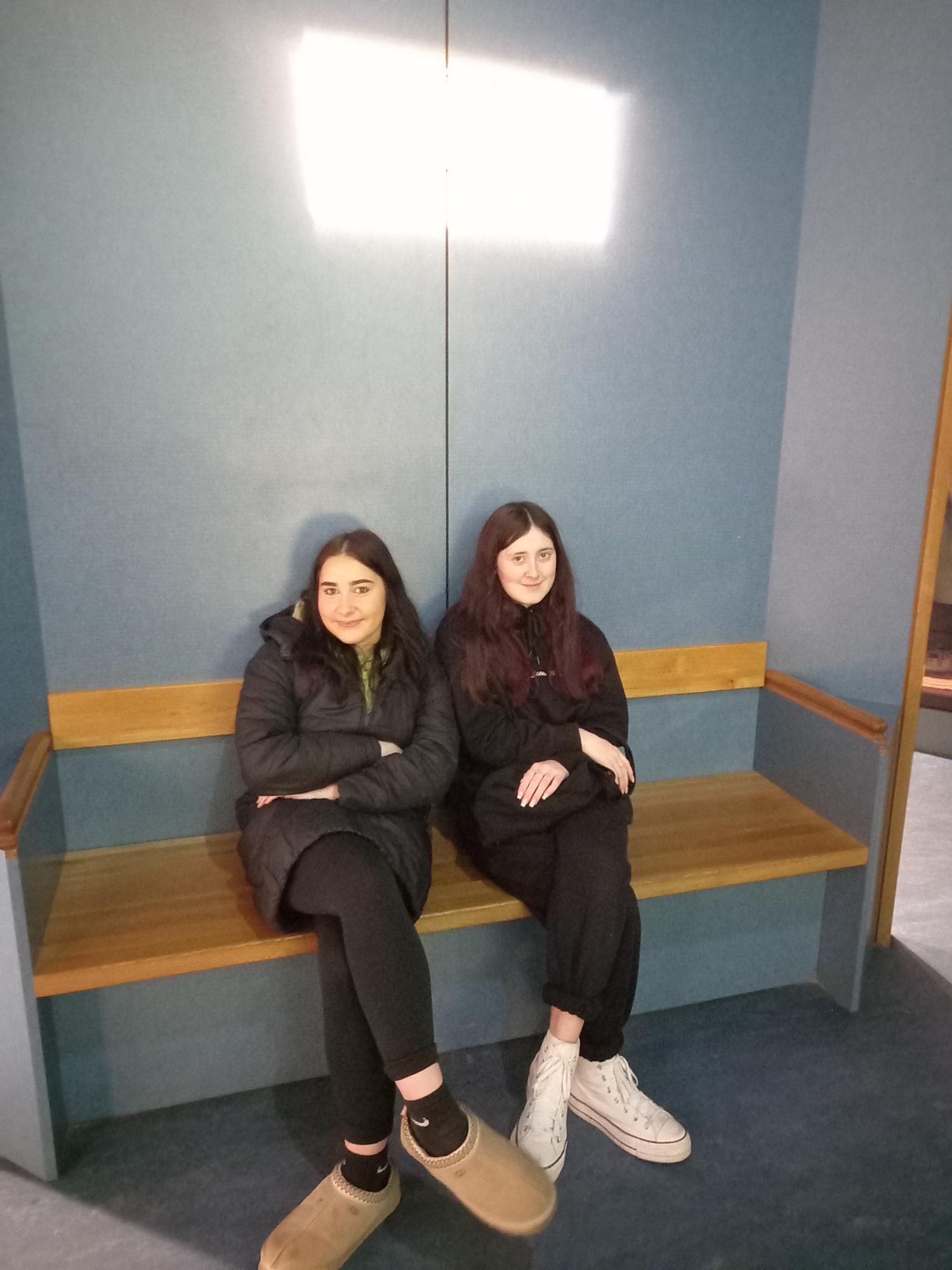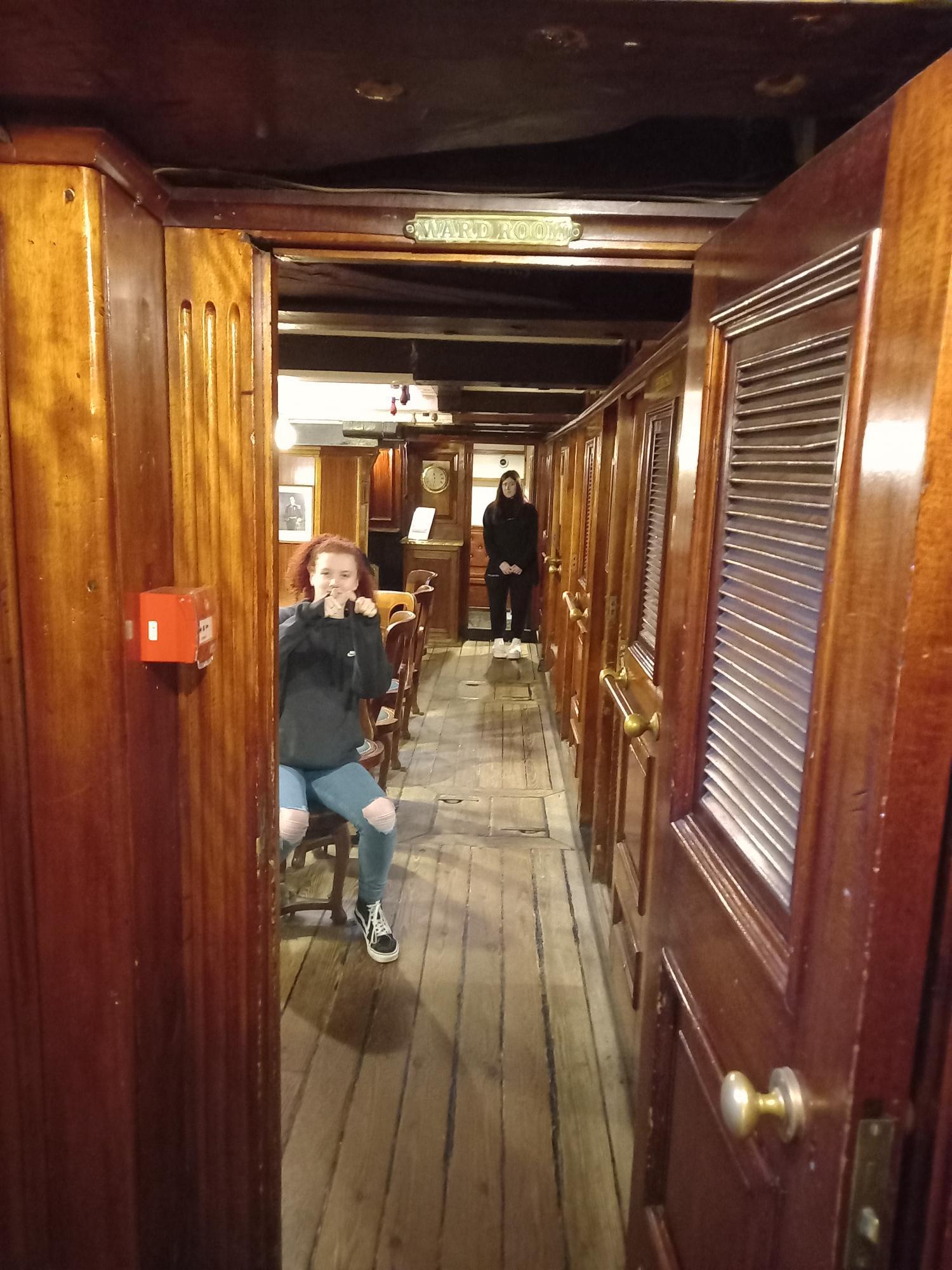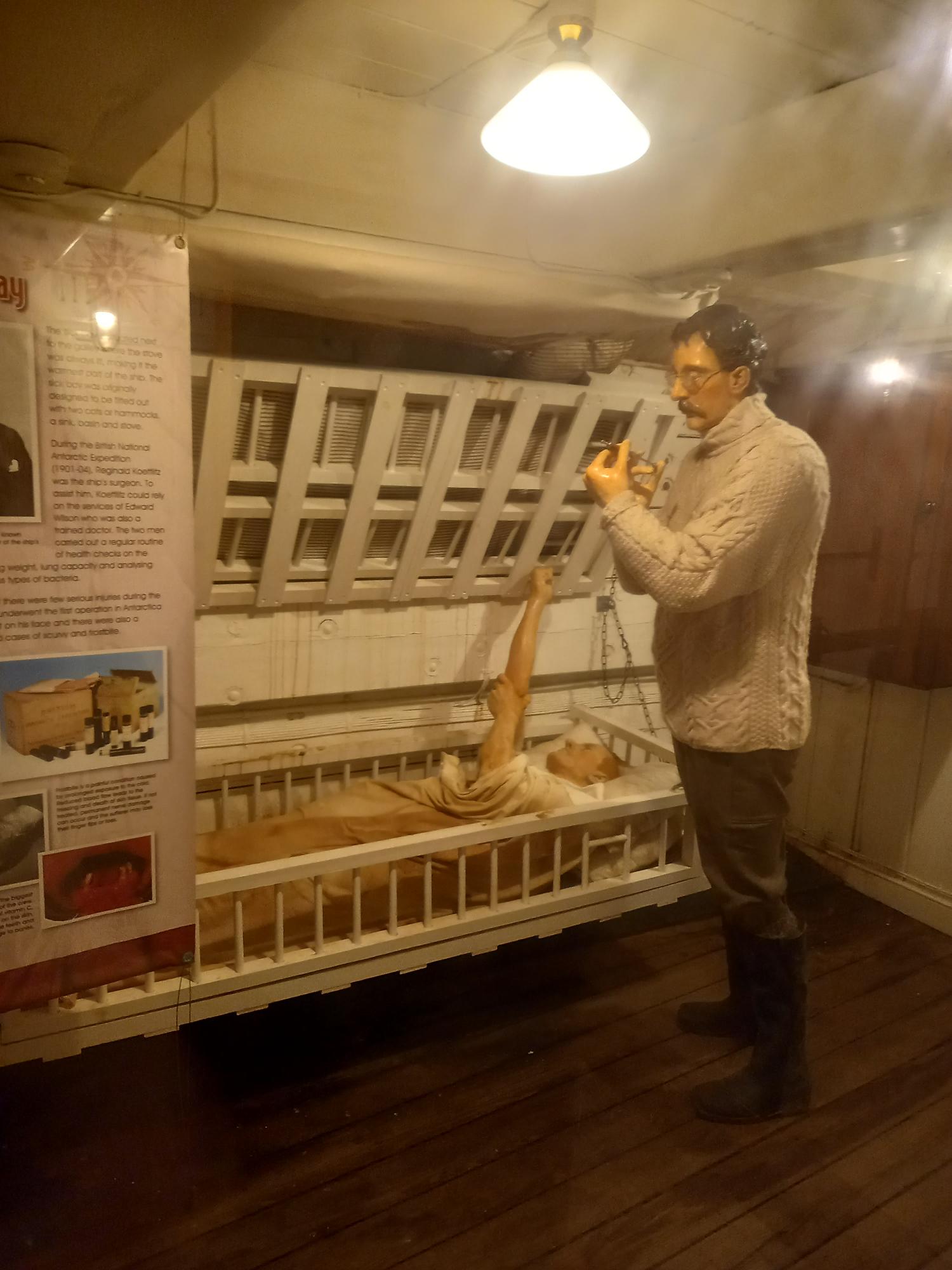On Thursday the 25th of January 2024 we printed off the proof of our addresses (they had an offer in January so that Dundee residents would get free admission) and had a wee walk down to the Discovery. When we got there, we went into the first room that had a projector showing a short film telling the story of the Discovery. Throughout the museum there was a variety of displays like what the cutlery and mugs they used, and what they wore. There were also a few more short films that we watched and interactive activities like dress up, stencilling, kids play area and lots more.


Facts we learnt about the Discovery:
- The RRS Discovery is a barque-rigged auxiliary steamship built in Dundee, Scotland for Antarctic research. Launched in 1901, she was the last traditional wooden three-masted ship to be built in the United Kingdom. Her first mission was the British National Antarctic Expedition, carrying Robert Falcon Scott and Ernest Shackleton on their first, and highly successful, journey to the Antarctic, known as the Discovery Expedition.
- The expedition was the first to sight an Emperor Penguin rookery and obtain an egg of the species. In the museum, there is a collected specimen of the penguin on display.
- By 1979, the Discovery was in a serious state of dilapidation. The first stage of her restoration was funded by a grant of £1/2 million from The Maritime Trust. In 1986, a new home was offered by Dundee Heritage Trust and on April 3rd Discovery berthed at Victoria Dock, welcomed by thousands who lined the shores of the River Tay. Today, over 100 years after leaving Dundee, Discovery sits proudly as the centrepiece of the Discovery Point Visitor Centre.




After going through all the different rooms, we went outside to make our way onto the ship. We went down some steep stairs and explored the bows of the ship where it was quite cold and smelly and where we saw the coalmining area and the equipment room (that smelled like leather). We then went upstairs to see the sick bay, and the room with a long table and chairs and beside that was where the captain and the “higher” crew slept. Later, we came back up onto the main and top decks of the ship where we saw the 2 steering wheels, the halyards, the sails and the engine order telegraph, which was a communications device used for the pilot on the bridge to order engineers in the engine room to power the vessel at a certain desired speed.
Thank you to the Discovery for our visit, we had a great time!

